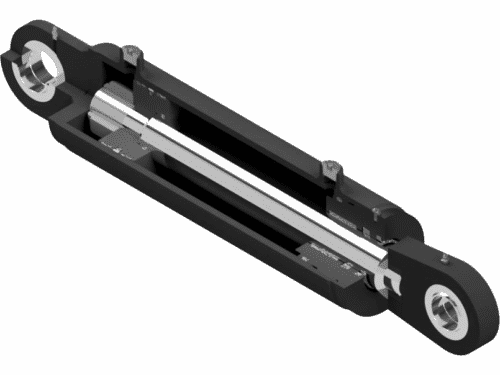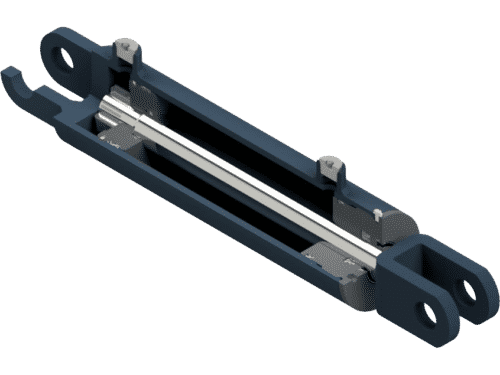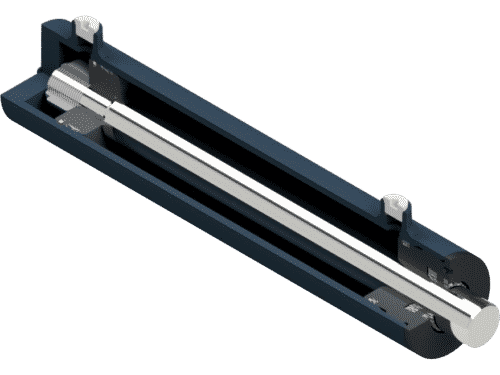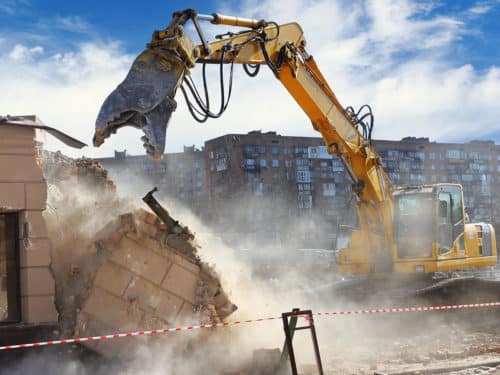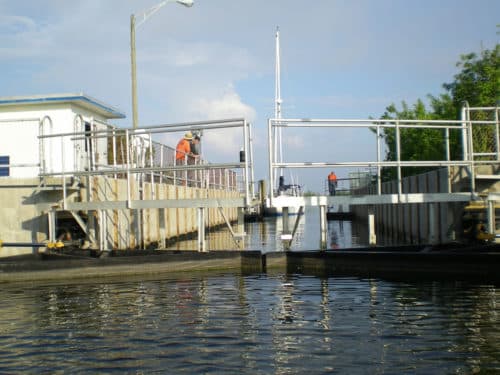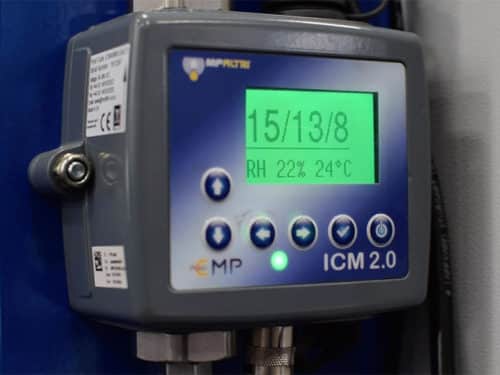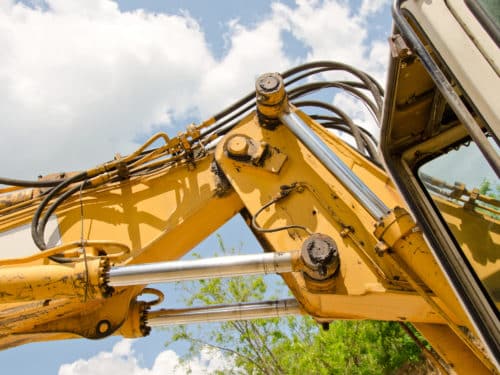One of the harsh realities of industries that rely on machinery is that sometimes, equipment breaks. The downtime caused by mechanical issues is not only frustrating, but costly. This guide covers how to prevent hydraulic cylinder failure, and what to do when issues arise.
Ways to Prevent Hydraulic Cylinder Failure
Hydraulic cylinder failure can’t always be prevented. Still, there are ways to minimize the risk of common operational and mechanical issues. The first step is using high-quality, Purpose-Built™ hydraulic cylinders in your mechanical equipment. Other ways to prevent hydraulic cylinder failure include:
- Using the Correct Rods: Bent rods shift the load placed on seals and can ultimately cause hydraulic cylinder failure. Rods can fail either because they are the wrong diameter, or the cylinder is not being used as its intended.
- Choosing the Proper Rod Finish: Too smooth of a finish can wear out the seal due to lack of lubrication. Too rough of a finish can cause leakage past the seal.
- Selecting High-Quality Cylinder Tubes: Ballooned tubes are a common issue that occurs when the cylinder wall is not thick enough, or if the material is not strong enough to handle the cylinder’s pressure.
- Maintaining A High Standard of Hydraulic Fluid Cleanliness: This is a key factor in preventing cylinder failure. Properly filtering hydraulic system oil and monitoring and changing out oil filter elements at regular service intervals will help prevent hydraulic cylinder failure caused by contamination.
- Checking Manufacturer Ratings: Operating a hydraulic cylinder within the manufacturer’s stated ratings is also critical. Not all cylinders are created equal, and understanding the limitations of the cylinder’s intended design will lead to longer service life in the field.
- Knowing Your Operating Environment: Protecting your hydraulic system from extreme or caustic environments can prevent hydraulic cylinder failure. Shielding the moving parts of a cylinder from caustic or harsh environments reduces the potential for failures.
- Performing Regular Hydraulic Cylinder Maintenance: Maintaining and replacing worn components keeps hydraulic cylinders running longer without a major interruption. Parts prone to wear include, but are not limited to, bushings installed in mounts, wear bands, hydraulic seals, and pivot pins. In some cases, mounts designed to adjust or be removed from the assembly without cutting or welding can also wear easily. Evaluating and replacing these parts at regular service intervals keeps your cylinder running and prevents misalignment.
Analyzing Hydraulic Cylinder System Failure
When a cylinder fails to meet your application requirements, it can be due to several reasons. Generally, a mechanical failure will prevent the cylinder from working at all. You can diagnose mechanical hydraulic cylinder failure by inspecting for external damage, or if you witnessed significant one-time overload event that caused the cylinder to physically break.
However, identifying why a mechanical failure occurred under normal operating conditions is more difficult. Sometimes, smaller, unnoticeable factors can weaken cylinder component materials over time. Eventually, this weakening can lead to mechanical failure, even under normal operating conditions.
Below, we will explore some of the common causes of hydraulic cylinder failure and how to perform a thorough analysis.
Sideloading
Sideloading can occur when there is misalignment between the cylinder and the load acting against it. This misalignment can cause excessive wear to the cylinder rod and head gland. The resulting damage, known as galling, can contaminate or ruin the seal, causing hydraulic cylinder failure.
Bent cylinder rods are another cause of sideloading. Bending typically happens in an overloading situation or if the rod diameter isn’t large enough for the cylinder’s intended function and force capability. Operating the cylinder while the rod is bending under load can also cause galling on rod and head gland surfaces. If a rod is overloaded beyond its calculated column load rating, it will either bend or break.
Contaminated Oil
In hydraulic cylinders, oil acts as a media to transfer power and create motion. Oil is also a critical lubricant that allows tight-tolerance metal components to move against each other without damaging effects. When the oil becomes contaminated, it can cause hydraulic cylinder failure.
- Particle Contamination: This type of contamination is caused by abrasive debris in the oil. Debris can damage the rod and piston seals and lead to galling of the cylinder rod and components.
- Water: This can reduce oil lubricity and lead to galling of the cylinder components. Water introduced into the cylinder can cause seals and wear bearings to swell, leading to premature wear and failure.
Environmental and Operating Conditions
Exposure to caustic elements or extreme operating environments can adversely affect hydraulic cylinder seals and components. Over time, the damage can lead to hydraulic cylinder failure.
- Corrosion: Chrome plated rods have microfractures the completely cover the rod surface. These microfractures make the rod base material vulnerable to corrosion in caustic environments. When corrosion occurs on the base metal of these rods, the chrome can begin flaking off. This compromises the rod’s sealing surface and can cause seal failure.
- Extreme Operating Temperatures: Exposure to temperatures above or below the manufacturer’s allowable rating can harden seals and make them brittle. This exposure can come from the ambient operating conditions of the cylinder or oil temperatures exceeding the seal’s capability.
Over-Pressurizing
When the pressure inside a cylinder exceeds the manufacturer’s stated pressure rating, it can damage both the hydraulic cylinder components and the seals, leading to hydraulic cylinder failure. Common issues of over-pressurizing include:
- Seal Extrusion: This issue is quite common and occurs when a portion of the seal is pushed too far into the gap (extrusion gap) between two cylinder components. This can cause physical damage to the seal and cause seal failure.
- High Pressure Events: These events can cause physical damage like ballooning or bursting of the cylinder barrel, dislodging the head gland, and bending or breaking the cylinder rod, rod stub, and cylinder mounts.
Under-Pressurizing
Some rod seals used in hydraulic cylinders require a minimum operating pressure to energize fully. When a rod seal fails to energize properly, it can lead to small amounts of internal or external leakage. Although there is no damage to the cylinder, it could be considered a failure due to the application requirements.
External Damage
In many applications, cylinders are vulnerable to damage from external sources. Over time, this damage can cause hydraulic cylinder failure.
- Damage to the cylinder rod surface can damage seals and cause the cylinder to leak.
- Cylinder rod wiper damage can allow contaminants to ingress into the cylinder, leading to rod and piston seal failure and potentially galling the cylinder components.
- Physical damage such as bending or cracking of the cylinder mounts and external components can weaken the base material and result in a catastrophic mechanical failure.
Worn or Deformed Bushings
If a cylinder was designed with soft metal bushings in the mounts, the bushings by design will eventually deform under the stresses of operation. Failure to replace hydraulic cylinder bushings at regular service life intervals can also create a loose mount interface and potential cylinder and load misalignment. This places stress on the cylinder mounts and rod and can fatigue the base material.
Fractures in Moving Components
Evaluating the condition of all moving and load engaging parts is a key element of diagnosing hydraulic cylinder failure. When a cylinder component physically breaks, evaluating the fractured area can also provide useful information in diagnosing a mechanical failure. For example, beach marks in the fractured area of a failed component indicate a fatigue fracture. When beach marks are not observed in a fracture, it points to a one-time significant overload situation.
Help Prevent Frequent Breakdowns with Purpose-Built™ Hydraulic Cylinders
At Aggressive Hydraulics, quality is a critical part of every Purpose-Built™ hydraulic cylinder we design. When used and maintained properly, our cylinders can help you extend equipment life and prevent hydraulic cylinder failure. Let us help you engineer a Purpose-Built™ hydraulic cylinder for your application.
